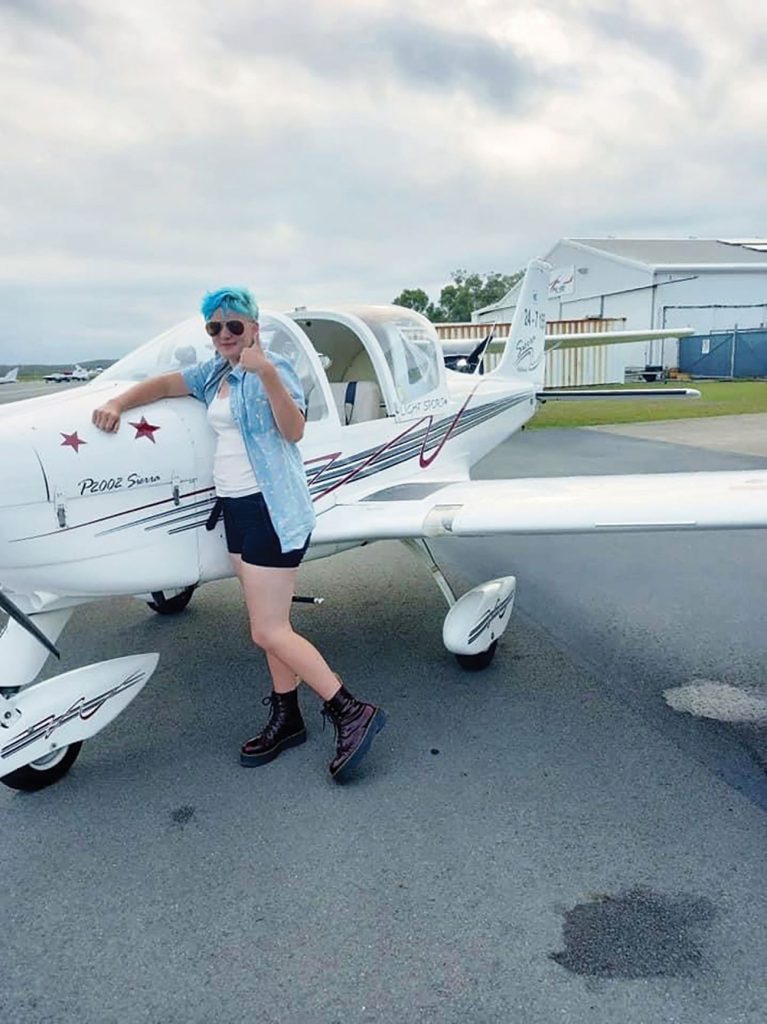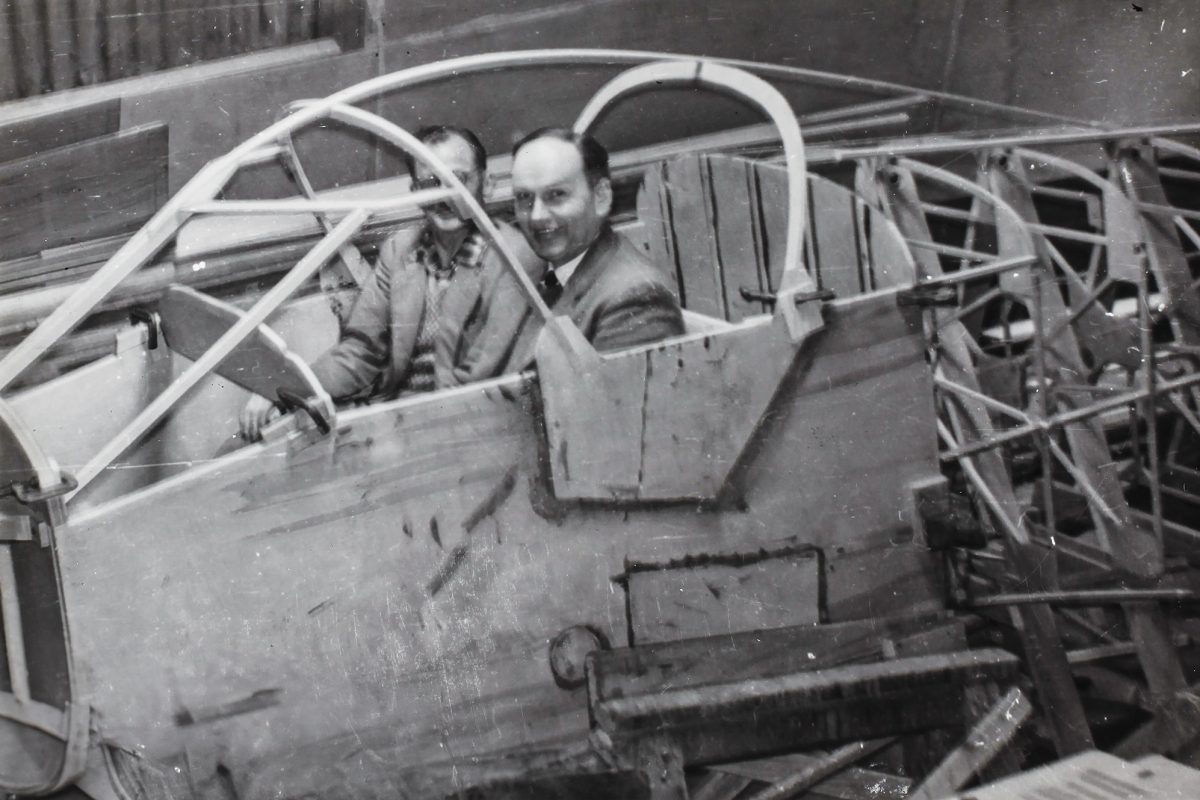Katie Rowe shares her story of learning to fly
Katie is part of the next generation of recreational pilots coming through the ranks and discovering the world of aviation. At first, Katie’s autism presented some barriers to aviation, but RAAus made aviation possible. Not only is it her passion, it’s now a healthy outlet.
Katie’s love for aviation was realised when she started flying float planes in one of her favourite video games. This fascination in the virtual world transformed into reality when she began driving to Brisbane Airport regularly to watch the planes fly overhead. This ritual became Katie’s outlet. When she had a tough day, this is where you would find her – gazing skyward, imagining herself flying her very own plane way above the clouds. That’s when Katie knew she really wanted to learn how to fly.
Katie was 14 when she discovered she is autistic. For the majority of her teens, she struggled to regulate her emotions and connect with her peers. “I have to hide things that I would normally do at home to regulate my emotions in public”, she says as she explains the concept of masking – a common autistic coping strategy that focuses on hiding behaviour they feel won’t be accepted in social situations. Katie’s the first to declare that masking is absolutely exhausting.
Katie started her aviation journey wanting to reach CPL – like many others – but she wasn’t able to get the required medical clearance. It seemed the journey might be over, until she was pointed towards RAAus.

At the age of 20, Katie brushed off her nerves and enquired about flying lessons with Inspire Aviation at Caloundra Aerodrome. Katie was paired up with Hannah Pattemore, Inspire Aviation’s Senior Flying Instructor, who has been teaching Katie through her entire flying journey. Just six months after taking her first trial flight, Katie had passed her Recreational Pilot Certificate – but not without a few challenges along the way.
Whilst the majority of her peers seemed to grasp the mathematical theory and arithmetic quite quickly, Katie would have to sit down with her instructor for many more hours and use her strength in visualisation to memorise certain movements and techniques. “If there was a cross-wind, I’d have to draw up where the control stick would be and where I’d have to put in rudder inputs to counteract the cross wind. I would be driving up to the school and rehearsing what I would say in the car over and over before I hopped in the plane,” she said.
Despite these challenges, Katie has been blown away by the support of the team at Inspire Aviation, particularly Hannah, her instructor. “They have been really inclusive, supportive and really patient with me as well. I want to stay with them as long as I can, they’re amazing,” she said. Over the past two years, Hannah has watched in admiration as Katie developed her flight skills. “One of my favourite things about teaching Katie to fly is her dedication and persistence. While I often have to go through new content with her a couple of times before she fully grasps the concept, she always has a desire to improve and is motivated to put in whatever time and effort it takes to achieve her objective,” Hannah said.
Hannah started flying with Katie only a short time after gaining her RAAus Senior Instructor rating, so she quickly realised she would need to be flexible with her teaching skills to suit Katie’s individual learning needs and goals. “My experience instructing Katie has definitely changed the way I approach instructing. Katie has very much shown me that learning to fly is a very individual journey and that every student’s learning process is very different”.

Since her diagnosis, Katie says she has become more accepting of herself and is more willing to come out of her shell. She has also realised that as she has spent more time flying with Hannah, she doesn’t feel the need to mask her behaviour as much and feels more comfortable around her instructor. “At first, I’d feel really nervous and act like I need to hide myself more, but now I feel completely comfortable with Hannah,” she says. Katie did most of her training in what she describes as a gorgeous little Tecnam Sierra. When we requested a few photos of Katie with her plane for this article, she said she would send us 20. Katie’s immense passion for flying is clear to anyone that meets her.
During her aviation journey, Katie has discovered that flying is a really positive outlet as an autistic person. As Katie explains, releasing energy (known as stimming), is an important part of life for someone who is autistic. “I’ve found that aviation is actually a really good energy release for me because I’m focusing on something I love to do.”
Now, Katie flies about twice a month and is working on how she can stretch her savings further and do more flying. Her next challenge is to complete her navigation
training, with already two sessions under her belt so far. “My first cross-country flight was a nightmare, there was so much going on! I never get fully through the flight plan without having to fix up my heading or my altitude. It is pretty stressful but I am enjoying navs immensely,” she said. Katie acknowledges that she gets incredibly nervous when flying to new places, but is really comfortable flying at her home ground of Caloundra Aerodrome.
Whilst navigation training has presented its own challenges, Hannah says that Katie has brought the same energy, enthusiasm and dedication to this phase of her training as she did to her pilot certificate and constant speed unit endorsement. “It is awesome to see her excitement and sense of achievement getting out of the aircraft for a break on a navigation exercise after arriving at an aerodrome that she’s never flown to before,” said Hannah.

The Recreational Pilot Certificate has allowed Katie an entry point into the world of flying due to its accessible and inclusive assessment criteria. One of the benefits of being an RAAus member means that Recreational Pilot Certificate holders only need to meet the health standard equivalents to those required for the issue of a private motor vehicle licence in Australia, which doesn’t require the need for costly aviation medicals like other aviation licences.
And Katie hasn’t forgotten about her CPL dream – now that she’s in the cockpit, it’s reignited her desire to become an airline pilot. She has been inspired by the Australian drama series RFDS, which is centred around the lives of workers at the Royal Flying Doctors Service. However, Katie understands there is a long road ahead in terms of flying hours, documentation, qualification and training to have a career in this industry. Katie has even considered following in the footsteps of Hannah and become a qualified RAAus instructor. “Any flying job would be a great job,” she says with sheer excitement at the idea of a career in aviation. No matter what Katie pursues, we have a
strong feeling that it will involve wings and we can’t wait to see what she does next.









